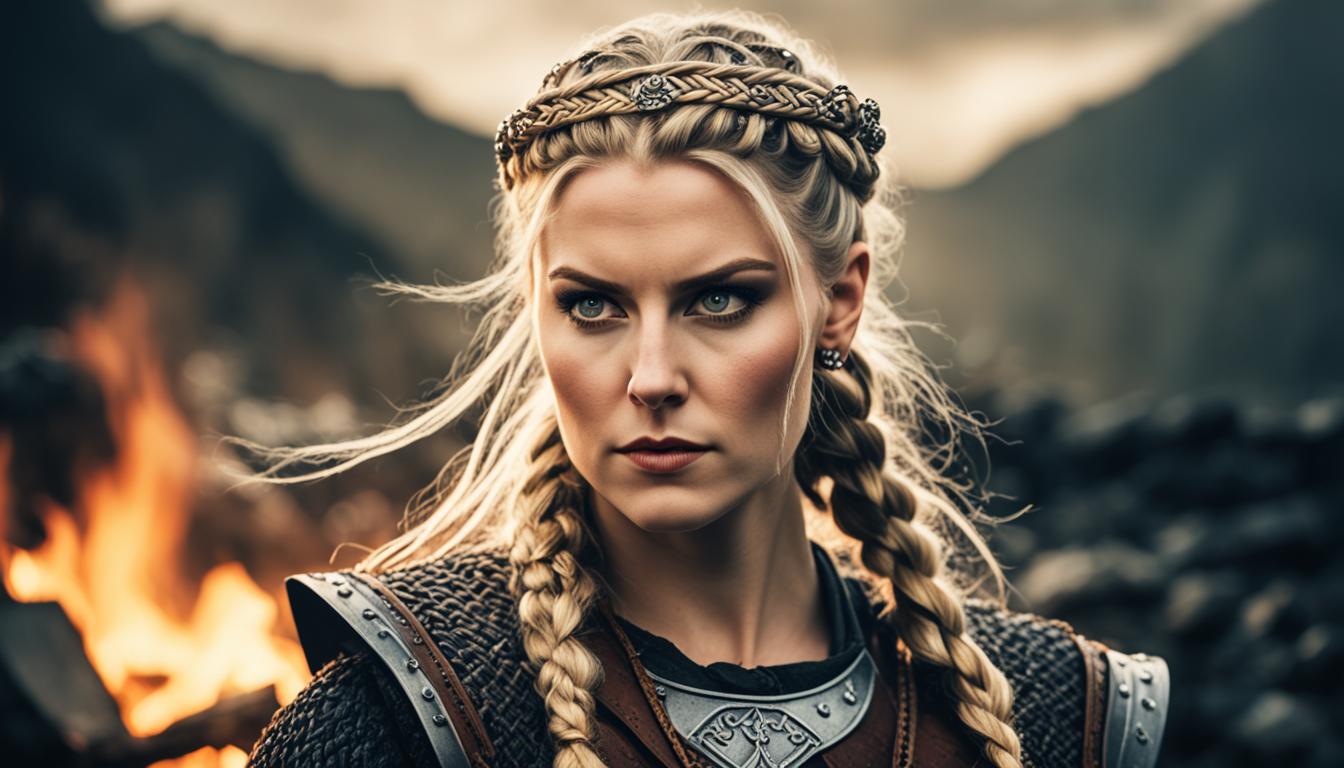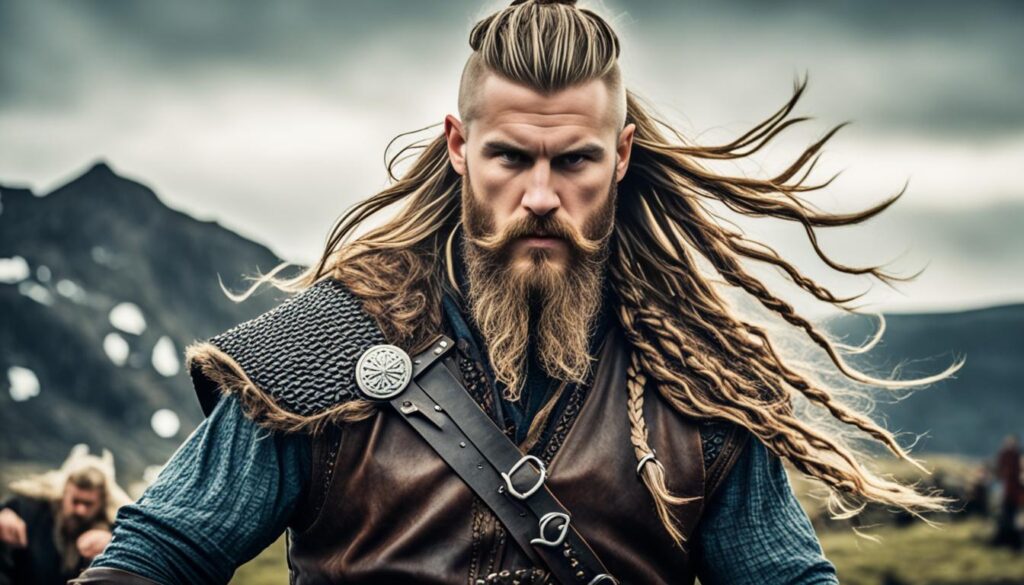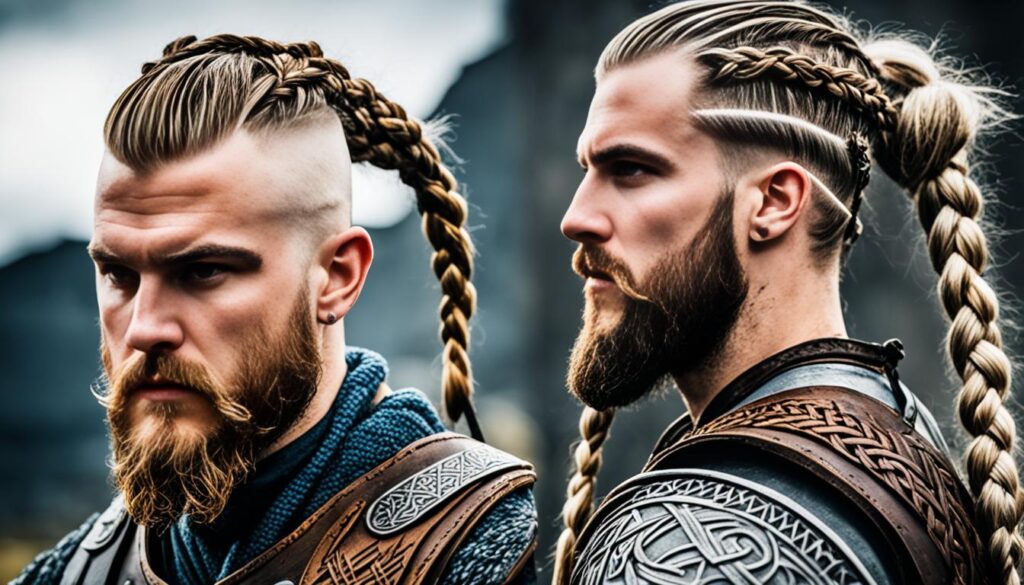
When we think of Vikings, many iconic images come to mind – fierce warriors, longships, and horned helmets. But what about their hair? Did Vikings wear braids, or is it just a Hollywood invention?
The truth is, Vikings placed great importance on personal presentation, including their hair. Evidence from artifacts and historical records suggests that both men and women in Viking society wore their hair in braids. Viking hairstyles varied in length, with some men wearing long braided hair and others opting for shorter styles. Women often wore their hair long and braided to keep it out of the way while performing daily tasks. Braided hair was seen as a sign of status and a way to convey beauty in Viking culture.
In this article, we will explore the fascinating world of Viking hairstyles, Norse braid styles, ancient Viking grooming practices, and the significance of hair traditions in Viking society. Get ready to delve into the world of Viking fashion and uncover the truth about their iconic braids.
Key Takeaways:
- Vikings placed great importance on personal presentation, including their hair.
- Both men and women in Viking society wore their hair in braids.
- Viking hairstyles varied in length, with some men wearing long braided hair and others opting for shorter styles.
- Women often wore their hair long and braided to keep it out of the way while performing daily tasks.
- Braided hair was seen as a sign of status and a way to convey beauty in Viking culture.
Women’s Hair
In Viking society, women paid great attention to their hair, which they wore long and often styled in intricate braids. These braided hairstyles were not only practical for daily tasks but also served as a way for women to showcase their beauty and status. Artifacts and sculptures depict Viking women with their hair braided up in buns or knots, adorned with jewelry and sometimes covered with bonnets or head dresses made of delicately woven linen or wool.
The Scandinavian braiding traditions were an integral part of Viking culture, reflecting both practicality and fashion sense. Let’s explore some of the most popular styles:
- Viking Plait: This classic braided hairstyle involved weaving three strands of hair together, creating a simple yet elegant look.
- Thor’s Knot: Named after the Norse god of thunder, this hairstyle involved intertwining two braids across the head, creating an elaborate and distinctive pattern.
- Fishtail Braid: Also known as the herringbone or mermaid braid, this style required two strands of hair woven together to create a unique, intricate pattern.
These braided hairstyles were often complemented with various accessories, such as silver or gold hairpins, beads, and ribbons, which added a touch of elegance and individuality to the overall look.
Beauty in Viking Society
“The beauty of a Viking woman lay not only in her physical appearance but also in the way she presented herself. Braided hairstyles showcased a woman’s wealth, creativity, and fashion sense, while also serving practical purposes in daily life.” – Dr. Astrid Magnusson, Viking Historian
Their stylish and well-maintained hair demonstrated the Vikings’ emphasis on personal grooming and self-expression. Women took pride in their appearance, reflecting the rich cultural heritage and intricate braiding traditions of Scandinavian societies.
As depicted in this image, Viking women adorned their braided hairstyles with elaborate accessories and intricate weaving techniques, making their hair an unmistakable symbol of beauty and social status.
Next, let us delve into the hairstyles and grooming practices of Viking men in Section 3.
Men’s Hair
Viking men were no exception when it came to hair grooming. They paid great attention to their hairstyles, adopting a variety of looks that ranged from long, tied back or braided hair to shorter styles suited for their active lifestyles. The artistic representations and historical accounts reveal that Viking men took immense pride in their hair and embraced various styling techniques.
Some men opted for long hairstyles, letting their hair flow freely or braiding it intricately. This allowed them to showcase their individuality and personal style. Others favored shorter haircuts for practicality and ease of maintenance.
Notably, beards were also an integral aspect of Viking men’s grooming routines. Many Viking men sported beards and took pride in their facial hair. Some even went the extra mile to braid or adorn their beards with beads or other decorative elements, further showcasing their attention to detail and sense of style.
The Influence of Viking Warrior Culture
Viking warrior culture played a significant role in shaping men’s hairstyles. In addition to the aesthetic appeal, hairstyles had practical functions for warriors. Long hair and beards provided protection from harsh weather conditions and offered additional padding for the head during battle.
Furthermore, certain Viking warrior hairstyles held specific meanings within the warrior society. A striking example is the “Svinfylking” or boar’s snout formation, in which warriors would form a wedge-shaped battle formation, with each warrior having a shaved area of hair from temple to temple, resembling the snout of a boar. This hairstyle not only distinguished the warriors but also symbolized their ferocity and bravery on the battlefield.

Shaved and Partially Shaved Heads
In Viking culture, hairstyles played a significant role in expressing identity and social status. While braided hairstyles were prevalent, there is evidence that Vikings also embraced shaved and partially shaved heads. Artistic depictions and historical accounts show Vikings with shaved backs or sides of their heads, creating a distinct and bold look.
Shaved and partially shaved head hairstyles among Vikings may have held symbolic meanings, such as representing strength, rank, or even a warrior status. By carving intricate patterns or strategically removing hair, Vikings showcased their attention to personal appearance and their dedication to their chosen style.
They achieved these hairstyles using razors and other grooming tools available at the time. These tools allowed them to sculpt their hair, creating unique and memorable looks. Shaving or partially shaving their heads demonstrated their commitment to personal grooming practices and their desire to stand out within Viking society.
By combining shaved or partially shaved heads with other hairstyle elements, such as braids or top knots, Vikings achieved a striking and visually striking aesthetic that reflected their individuality. For Viking warriors, these bold hairstyles could be seen on the battlefield, instilling fear and commanding respect from their adversaries.
The image below showcases a Viking warrior with a partially shaved head, emphasizing the contrast between the shaved sides and the long hair on top.

Through their various grooming practices, including shaved and partially shaved heads, Vikings demonstrated their pride in their appearance and their keen sense of style. These unique hairstyles remain iconic symbols of Viking culture, capturing their fierce spirit and individuality.
Hair Dyeing and Hair Care
Vikings were known for their excellent personal hygiene and their meticulous hair care practices. Taking care of their hair was a significant part of their grooming routine. While hair dyeing was not universal among Vikings, some sources suggest that they used soap with a high lye content, which could bleach their hair and beard to achieve a striking platinum blonde color. This unique hair dyeing technique was likely used by both men and women to enhance their appearance and make a bold statement.
However, hair dyeing was not limited to blonde shades. Vikings had a wide range of hair colors, including red, brown, and black. These natural hair colors were a result of their genetic diversity and geographical location.
Viking Hair Dyeing:
Conclusion
The evidence from historical records and artifacts suggests that Vikings embraced braided hair as a prominent grooming practice in their society. Both men and women styled their hair in intricate braids, with women often adorning elaborate braided hairstyles to showcase their status and beauty. Viking men also incorporated braids into their appearance, using them to embellish their helmets and shields. The diversity of Viking hairstyles reflects their meticulous attention to personal grooming and the significance they placed on hair in ancient Norse culture.
These historical hairstyles and grooming practices have not been forgotten. The revival of Viking braided hair in modern times demonstrates the enduring allure and influence of these ancient traditions. Today, people across the world, including in the United States, continue to embrace and celebrate Viking hairstyles, appreciating their historical and cultural significance.
From the intricate braids worn by Viking women to the adorned braids of Viking men, these hairstyles showcase the artistry and craftsmanship of the era. Understanding Viking grooming practices and historical hairstyles provides valuable insights into the cultural traditions that shaped ancient Scandinavian society. As we continue to explore and learn more about the fascinating world of Vikings, their braided hair remains an enduring symbol of their legacy and impact on history.






